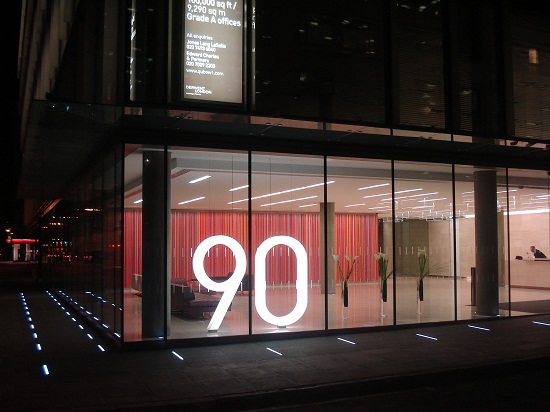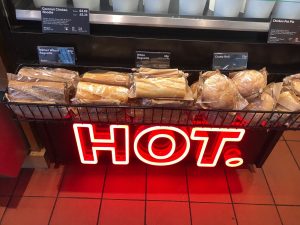Illuminated sign refers to any sign that incorporates some form of lighting. This can include fluorescent lighting, neon lighting and LED lighting. The lighting can be placed in different parts or elements of the sign –for example signs can be back-lit, edge-lit, trough-lit etc.
LED lighting accounts for approx. 60% of all sign illumination and neon approx. 13% of illuminated signs. Fluorescent lighting’s share of the illumination market is about 26%.
The popularity of LED lighting reflects their durability, low-energy use and flexibility as part of increasingly complex sign designs.
Where is an illuminated sign used?
Illuminated signs are used both externally and internally.
External signs include ‘monument’ signs, directional signs, illuminated fascias, channel letters and cabinet wall signs.
Internal illuminated sign include retail signage, directional signage and lightboxes.
Research has shown that illuminated signs have a strong impact on the viewer. For many business the need to make this impact has increased as markets become more competitive and High Street retailers are battling over fewer and fewer customers. With lowering costs, increased sustainability and ever more complex sign making processes, illuminated signs have become an important marketing tool for many businesses.
Is an illuminated sign sustainable?
LED lighting compares favourably with fluorescent and neon lighting.
Compared to fluorescent lighting, LED lighting offers more than double the efficiency. With increasing life expectancy they offer the most sustainable solution for illuminated signs.
Neon bulbs need 15,000 volts to run while LEDs need just 24 volts. If you are thinking about a large outdoor display and contemplating LED or neon lighting then this means a huge saving in running costs if you were to opt for an LED display.
With reduced energy-use and longer lifespan LED lighting is seen as the most sustainable solution, and accounts for its continued growth as the source of lighting in commercial signs.



